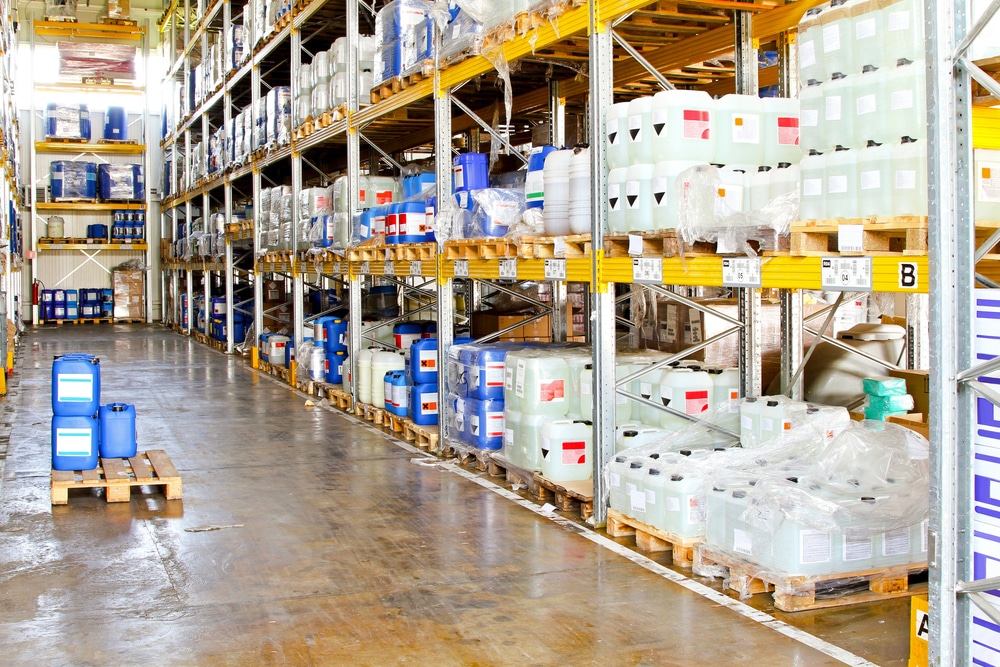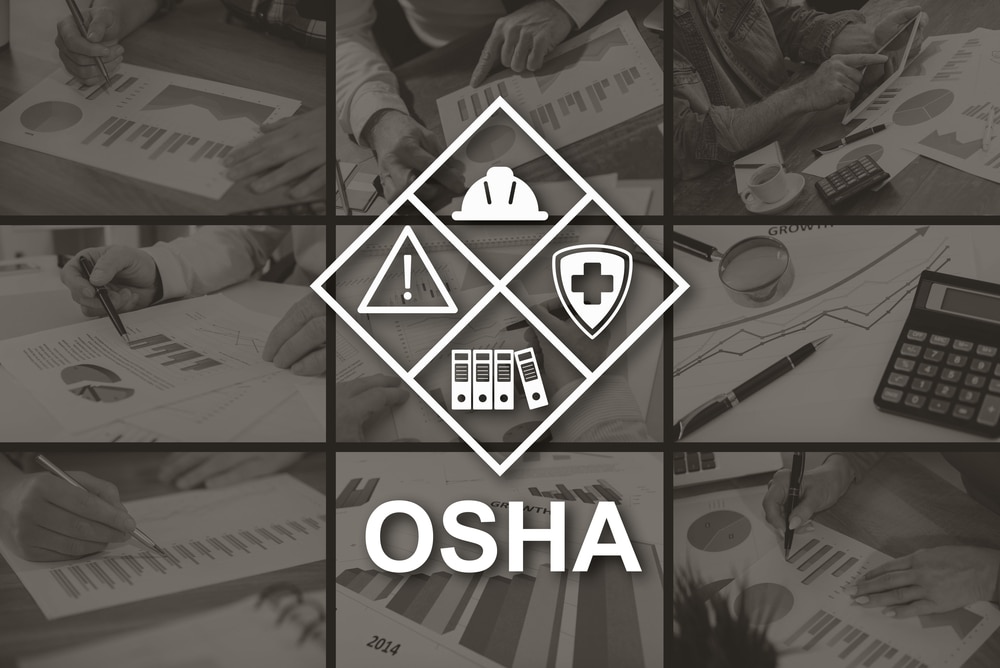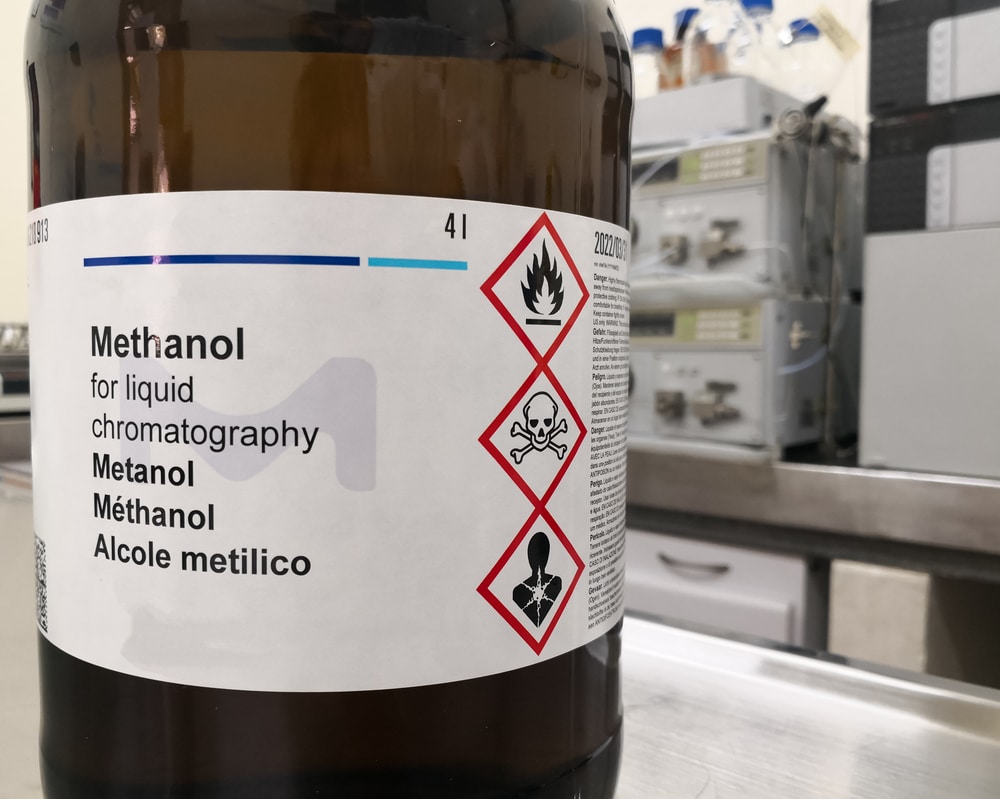The Importance of Chemical Labeling in a Laboratory

The importance of proper chemical labeling cannot be overstated in a laboratory environment.
Fast-paced and filled with potential hazards, labs depend greatly on strict order for productive, accident-free work.
This brief guide explores why meticulous laboratory chemical label protocols are vital. We also have complete series of lab safety videos as well.
Why is Labeling Chemicals Important in the Laboratory?
Correct labels are a high priority, including ongoing workplace safety.
A safe setting is essential for researchers’ health, well-being, and productivity. Accurate, comprehensive identification allows laboratories to operate safely and efficiently. Keeping a lab clean, orderly, and following good safety protocols helps prevent injuries, illnesses, spills, and other problems. The importance of lab safety cannot be compromised at any time.

Chemical Label Data and Accuracy
To correctly handle chemicals, researchers must know the exact contents of every chemical container with unwavering accuracy.
Dangerous chemicals, such as flammable or corrosive liquids, must be labeled accurately and appropriately. Without dependable labeling, mixups can create mayhem.
Avoid Accidental Misuse
Properly labeled chemicals are a non-negotiable aspect of safe lab operations, as they help to ensure the proper care and storage of materials.
When it comes to hazardous chemicals, there is zero room for error. Chemical containers must be clearly marked with the appropriate chemical label. Each chemical container requires its own complete label.
Accident and Emergency Prevention and Resource Preservation
Accurate information is necessary to avoid accidents and emergencies in the lab. Using a chemical without certainty can be explosive.
It also affects productivity – an improper label on an original container can mean valuable samples must be discarded. Even poorly labeled non-hazardous specimens may not be available for recollection.
Unstable Items and Expiration Dates
Samples are sometimes unstable or have a limited shelf-life. Quality cannot be guaranteed if expiration dates aren’t noted, rendering them useless.
If unstable substances are misused, experiments will fail. Avoid wasting ingredients with complete, correct chemical labels in the lab.

Storage Procedures
Effective labeling procedures in laboratories don’t stop at the chemical container. Rather, the label is an important cog in a well-oiled machine.
Chemical storage containers, storage cabinets, toxic waste receptacles, equipment, machinery, and more, often require a proper label to ensure a safe laboratory setting.
Containers must display applicable warnings when used to store flammable or corrosive materials, so they can be stored and handled correctly.
For example, incoming containers may include the full chemical name, associated risks and hazard information, container storage instructions, preparation date, date received, and any other pertinent data.
This is part of a nationwide hazard communication standard designed to keep all workers and researchers safe in the laboratory.
Indications of Proper Storage Requirements
Labels should indicate storage requirements and conditions. Flammable materials must be labeled and stored in the designated storage area.
Use resistant storage tanks for corrosive chemicals, and only use solvent tanks for appropriate contents. Waste must be labeled and properly disposed of. For specific labeling questions, ask a lab supervisor.
Conduct Reliable Research
Reliable labeling procedures preserve the research validity. Labels help to uphold stellar, organized laboratory work.
They’re integral to comprehensive safety measures and effective hazard response procedures and allow experiments to be conducted correctly.

Compliance with OSHA Regulations
The Occupational Safety and Health Administration (OSHA) is responsible for regulating US work safety standards and healthy conditions in the workplace.
Under the OSHA “right-to-know” standard, all chemical manufacturers must provide chemical information via accurate labeling and comprehensive material safety data sheets.
Constantly Evolving Protocols and Protection Guidelines
Labs’ chemical identification measures were first outlined in 1983 by the OSHA Hazard Communication Standard, to grant all affected individuals the right to know what chemicals and associated hazards are handled in classrooms and laboratories.
Initially, OSHA required a label to display appropriate warnings for hazards with basic information, but guidelines later expanded to include the specific hazards and the organs affected by exposure, along with a highlighted hazard summary. The chemical’s material safety data sheet can supplement for more in-depth data.
Effective Labeling for Hazardous Chemicals
Per the formal standards outlined by the National Fire Protection Association and OSHA, comprehensive hazard information must be listed on the proper label for any container used for chemicals.
Researchers rely on chemical container labels to determine the hazard class of the substance contained. Even small containers must clearly list essential data regarding their contents.
While labeling systems can differ by lab, a good example will include:
- Complete chemical name
- Concentration (if in solution, strength or molarity should be noted)
- Hazard statements (potential bodily harm)
- Date of preparation (chemical solutions can become more dangerous over time)

Chemical Label Example
Here’s an example of an acceptable chemical label for a 6 M hydrochloric acid solution prepared in 2023:
- Hydrochloric Acid
- 6 M solution
- Corrosive, harmful to all tissue
- Avoid all contact, especially with skin, eyes, respiratory.
Some regions also require including the National Fire Protection Association code and warning label.
Liquids and Buffer Solutions
Whenever a container appears to contain a liquid that may be chemical, it must be properly labeled to accurately identify its contents to ensure safe handling and correct storage or disposal.
Always label buffer solutions according to specific lab protocols. OSHA regulations state that labels on all incoming containers should be maintained. Don’t deface an original label; merely relabel it as needed.
Assessing Hazards for Safe and Appropriate Handling and Storage
Hazards are common in the lab; researchers and emergency responders divide them by hazard class. If a chemical or solution spills, a designated system is in place for responding to each hazard class.
A label must be compatible with the solvent it will contain and the conditions the container will face. Small containers, or those stored in refrigerators or freezers, often require a certain type of label.
Secondary Containers
Secondary containers include jars, jugs, spray bottles, and other smaller containers used to transfer materials from their primary container.
OSHA requires a secondary container to be labeled with the following:
- Complete chemical name
- Hazard contained
- Date of transfer
- Date of expiry

Always Adhere to the Laboratory’s Procedures
Each lab’s system can vary, but the core principles remain the same. Clear communication and effective operations are key.
Researchers can face numerous challenges when labeling containers, chemicals, and hazards in the lab. Exposure to various chemicals or extreme temperatures can compromise or destroy inadequate chemical container labels.
Selecting and Using Proper Labeling Materials
When dealing with liquids, the materials present and environmental conditions will dictate the procedures. The best label depends on the testing process, sample type, and size. The hazard level of chemicals and hazards must be listed on the label.
Appropriate tools matter – permanent marker on adhesive label paper may be acceptable in some cases, but won’t be resistant to all conditions or chemicals. It’s not uncommon for permanent marker ink to wipe off with an alcohol solution, for example.
Small chemical containers and vials can be labeled with typed, printed stickers to facilitate comprehensive, legible hazard information. Frozen vials require special cryo markers to preserve data.
Wrap-Up
Chemical labeling is integral to lab safety and research validity.
An accurate label is vital to identify and handle any chemical hazard, non-hazardous materials and other chemicals. Experimenter safety and credible research depend on vigilant practices with chemical hazards.
From machinery and long-term storage to corrosive chemicals in daily experiments, comprehensive protocols are key to a productive, organized, and safe lab.
Frequently Asked Questions
Harmful substances used in laboratories, spill hazards, and risks must be clearly communicated to protect researchers and data. Cutting corners could be catastrophic.
Science depends on reliable research. Samples become unusable if a labeling system doesn’t require chemical containers and vials to display each chemical name and hazard identification.
Refer to individual chemical hazard statements and the laboratory safety data sheet database for specific protocols.
Hazard identification is a key purpose of properly labeled containers. This allows workers to accurately assess the hazard level of any chemical substance or liquid and proceed accordingly.
Operating efficiently and safely in often hazardous, fast-paced laboratories requires total confidence in all materials and equipment.